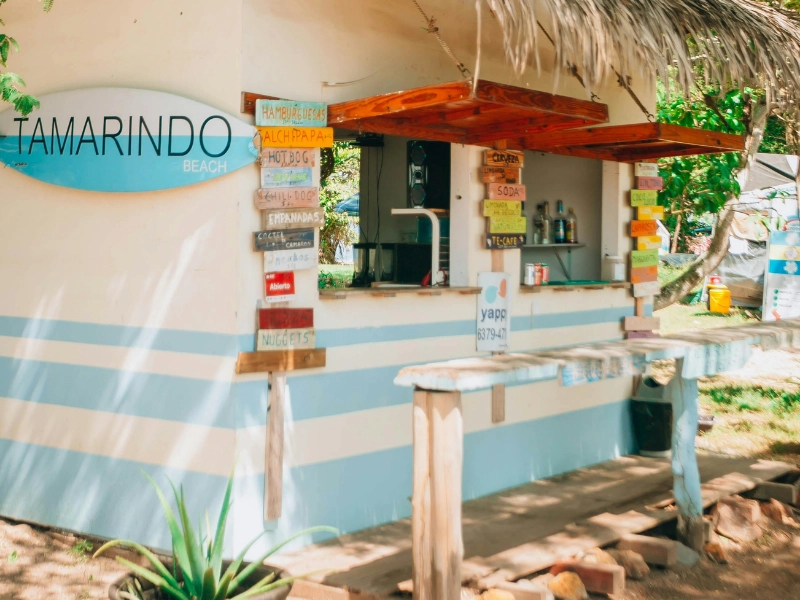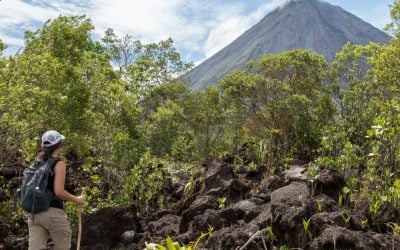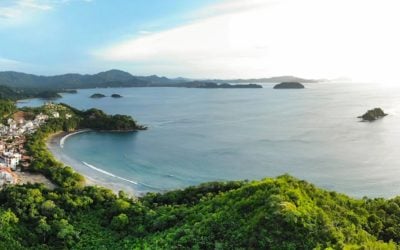For most travelers, driving is the most convenient way to get to their destination. Why? Lots of reasons! Flexibility, comfort, reliability, speed, and many other reasons add to the fun of exploring the open road.
In any case, it’s important to check local regulations. If you find driving around new destinations exciting, here’s everything you need to know about driving in Costa Rica!

Things to Know About Driving in Costa Rica
Getting behind the wheel in Costa Rica can be tricky, especially if it’s your first time here and you’re unsure about the country’s laws. But don’t worry. We’re here to help you get excited and ready for your adventure!
If you plan to drive in Costa Rica, here are some things you should know:
- The legal driving age in this paradise is 18. However, rental car agencies usually require drivers to be at least 25, but some will accept drivers older than 21. Typically, drivers under 25 may be charged an additional daily car rental fee of $10-$20.
- To drive in Costa Rica, you don’t need an international driver’s license. A valid driver’s license from your home country will do.
- In case a police officer pulls you over, you should always have your passport on you or a copy of it that includes the photo page, entry stamp page, and tourist visa.
- Like many other countries, the right-hand side of the road is used.
- Speed limits are measured in kilometers, and gas tanks are measured in liters.
- Drivers in Costa Rica must have third-party liability insurance, which covers damages or injuries to others or their property. It’s also a good idea to get collision and theft insurance.
Understand some local traffic laws
Depending on the country, traffic rules and customs may differ significantly from what you’re used to at home. Understanding local laws prevents accidents and legal issues and ensures respectful interactions with drivers.
When driving in Costa Rica, knowing the laws is especially helpful for a more enjoyable and stress-free travel adventure.
Here are some essential laws to know:
- Costa Rica speed limits are posted on street signs. Highway speed limits are usually 120-90 km/h. In cities like San Jose, it’s 60 km/h, and on rural roads, it’s 80 km/h.
- Passengers must wear a seatbelt.
- Children under 12 must ride in the back seat in a child safety seat.
- It’s strictly prohibited to drive under the influence of alcohol or drugs.
- Driving while on a cell phone is illegal in Costa Rica.
- Please let your rental car company know if you get a speeding ticket since you’ll have to pay for it when you return the car.
Tips on Handling Different Road Conditions
If you’re planning a road trip in Costa Rica, you should be prepared for challenging road conditions. Why? Simple! Costa Rica is a tropical country with hot weather and frequent rainfall.
These weather conditions are likely to cause potholes and washouts on the roads. Keep your eyes on the road and drive slowly and defensively.
Here are a few other things to keep in mind:
Paved roads vs dirt roads
In urban areas like downtown San Jose, you’ll find well-paved roads, some with lines but mostly not.
The main roads in smaller cities and beach towns are usually paved, but the lines might be missing. Also, roads can be narrow, winding, or not paved at all. Watch out for animals crossing the street, kids walking beside the road, and bikes on the way. Also, be extra careful during the rainy season, as dirt roads get slippery.
Choosing the correct vehicle
A good piece of advice is to request a 4×4 vehicle from the car rental company because they are practical for exploring the country. It’s also a good idea to contact rental companies well in advance, especially during peak tourist season when rental cars are usually full.
Types of roads
Most roads in Costa Rica, including highways, usually have just one lane. Yet, you’ll sometimes see two-lane roads. So, whether cruising through the city or exploring a more rural location, be prepared to find these single-lane roads.
River crossings & bridges
There are some places in Costa Rica where you have to cross rivers or streams. A good safety tip is to check the water depth and flow before crossing a river. If you need more clarification, talk to locals for advice or choose an alternate route.
Some areas may feature narrow bridges, and destinations such as Montezuma, Santa Teresa, and Malpaís may involve ferry crossings. In these situations, ensure your vehicle has adequate space and stability and follow instructions.
Tips for Staying Safe on Traffic
In Costa Rica, traffic is another factor to consider before you hit the road. While the country is relatively small, it has a lot of traffic in urban areas, which can be frustrating and stressful.
Here’s what you can do to make it through these situations safely:
- One of the best tips for driving in Costa Rica is to avoid rush hours, which are 5-8 AM and 3-6 PM Monday through Friday. If you must do it, stay alert and drive defensively.
- Since roads are often one-lane, you might get stuck behind a slow car. It’s okay to pass if you have to, but only if you feel comfortable doing so. If someone honks at you, let them pass.
- To navigate more confidently on the roads, use Google Maps or Waze.
- Fill up before you drive long distances since gas stations are spread out. Gas prices are all regulated by the government, so there’s no need to compare prices.
- Don’t drive long distances at night, especially during the rainy season. Lack of street lights and unexpected rain make night driving dangerous. If you have to drive at night, stick to short distances.
Tips for Emergency Situations
While your trip to Costa Rica promises incredible adventures, it’s wise to be prepared for unexpected challenges. Knowing how to handle emergencies on the road is crucial, whether it’s a downpour or a flat tire.
Here are some tips to keep you safe and stress-free on your journey:
- Prepare a basic emergency kit with a flashlight, first aid supplies, and other essential tools.
- Keep local emergency numbers on your phone in case of an accident or medical emergency. Also, keep the car rental agency’s contact information for immediate assistance.
- Your tires need to be in good shape and have the right pressure. You should also have a spare tire.
- Be aware of weather conditions, especially during the rainy season.
- Ask your car rental company about roadside assistance for extra peace of mind.
- Learn basic Spanish phrases to communicate in case of language barriers during an emergency.
- Be aware of local police stations along your route.
- Understand your car insurance coverage, including any emergency policies.
- Before leaving the rental company, ensure your car is in good shape.

Get Ready to Enjoy Costa Rican Roads!
Driving through Costa Rica’s picturesque landscapes and vibrant towns adds a touch of magic to your journey. If you’re ready to roll and have fun driving around paradise, contact Find My Costa Rica today!
We’re your go-to experts, ready to assist with car rentals and other transportation or accommodation needs! Our goal is to make your travel worry-free!
FAQ
1. What should you do if you get pulled over in Costa Rica?
If pulled over, remain calm. Make sure you have your license, passport, and car rental documents. Also, follow any instructions, and if you get a ticket, pay it once you return the car.
2. Are road signs in Costa Rica in English?
No. Costa Rican road signs are in Spanish, but they’re pretty self-explanatory.
3. Is it hard for Americans to drive in Costa Rica?
Due to the uneven terrain and varying road conditions, driving in Costa Rica can be challenging for Americans. However, it can be done.





